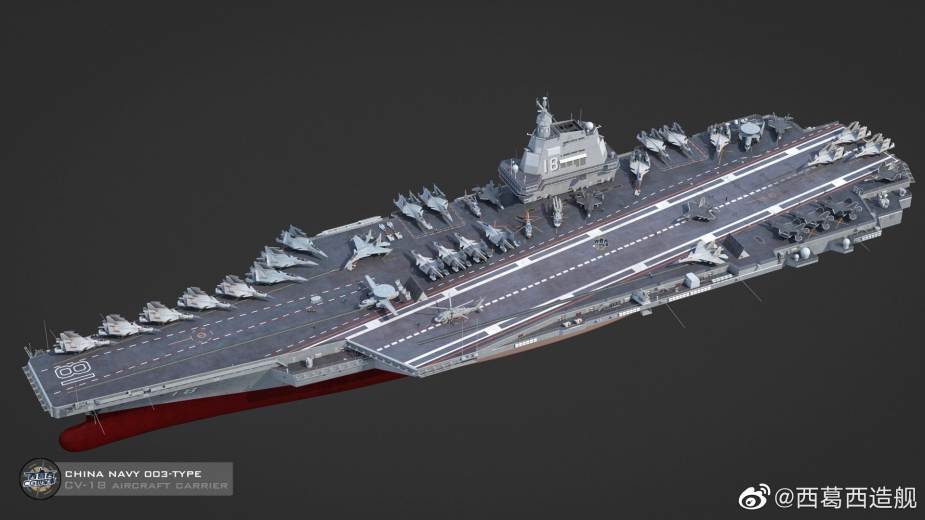Despite the strict internet controls in China, a growing trend among military enthusiasts to share photos online featuring sensitive military equipment has triggered a strong warning from the country’s top counter-espionage agency.
Russia To Retire World’s Only Nuclear-Powered, Largest Battle-Cruiser Pyotr Veliky; Sister Ship To Serve In Arctic
The agency cautions military enthusiasts against posting such photos online, highlighting the potential threat to national security.
On December 23, the Ministry of State Security announced that individuals capturing images of sensitive military equipment could face imprisonment. The ministry added that photographing such equipment without permission poses a grave threat to national security.
According to the ministry, these images could disclose critical details and advancements in military technology, including aspects of aircraft carriers, providing “hostile foreign forces” with the means to analyze combat effectiveness.
The Ministry’s statement highlights a heightened concern, presumably triggered by the frequent sharing of photos featuring the Chinese aircraft carrier Fujian. These online images have unveiled ongoing developments associated with the Chinese aircraft carrier.
In November, the internet was abuzz with videos and pictures unveiling the initiation of catapult testing on the Chinese aircraft carrier Fujian—a crucial milestone in the construction of the vessel poised to be the first carrier in the People’s Liberation Army Navy (PLAN) launching aircraft with catapults, departing from the traditional ski jump method at the bow.
Meanwhile, the official newspaper of the Central Committee of the Chinese Communist Party, The People’s Daily, conveyed on its official Weibo account that the development cycle of new military equipment and massive surface vessels, like aircraft carriers, is extensive.

The publication expressed concern about overseas hostile forces potentially using photos taken by individuals in private to deduce the construction progress of military equipment accurately.
The report added that the analysis could enable “hostile forces” to ascertain the timing and formation of combat forces and allow for estimated judgments and preparations of countermeasures as a point of reference.
In addition to the aircraft carrier advancements, photos shared by military enthusiasts have recently brought to light the presence of a suspected mock-up of China’s J-35 next-generation fighter aircraft on the deck of the Fujian.
The J-35 is the carrier-based iteration of the FC-31 or J-31 Gyrfalcon, a fifth-generation aircraft crafted by China’s state-owned Shenyang Aircraft Corporation specifically for the Chinese Navy.
What Prompts China’s Concern Regarding Such Activities?
China’s spy agency’s announcement underscores the gravity with which Chinese authorities are addressing unauthorized disclosure of sensitive information.
The Ministry of State Security expressed concerns that disseminating such images could jeopardize defense planning by revealing sensitive information like the location of deployments and the frequency of military equipment usage.
Highlighting instances from recent years, the ministry noted cases where individuals used professional equipment such as telephoto lenses and drones to covertly photograph military equipment at military airports, ports, and national defense industrial units.
The ministry characterized these individuals as “military fans” who illegally obtained national military information for personal reasons, aiming to showcase and gain attention.
The body said that the information, once spread on the internet, can be exploited by those with malicious intent, causing significant harm to national military security. The ministry assured that the offenders faced consequences for their actions.
In 2021, a military enthusiast was sentenced to one year in prison for unlawfully obtaining state secrets by secretly photographing the Fujian aircraft carrier before its official launch in June 2022.
The captured images, taken with a remote high-definition camera, reportedly contained time details, allowing foreign intelligence to assess the carrier’s progress, and had sufficient resolution to discern sensitive device parameters.
The Ministry warned that individuals illegally acquiring materials with state secrets, not constituting a criminal offense, could face up to 10 days in detention, while serious offenders obtaining state secrets through theft, spying, or bribery could be sentenced to a maximum of seven years in prison.
Despite the Ministry’s stern warnings, there is an understanding that some leaks related to Chinese weapon development are intentional.
A notable example occurred in 2011 when images of China’s advanced J-20 stealth aircraft surfaced online. Western analysts suggested that that disclosure was calculated, indicating a deliberate decision to release the information into the public domain.
At the time, the move reflected the Chinese military’s increasing confidence, with a push for more significant influence and larger budgets.
Nonetheless, deliberately revealing pictures of successful weapon development initiatives also has the potential to enhance national pride and confidence. Furthermore, it can function as a means of signaling to potential adversaries regarding the country’s capabilities.
- Contact the author at ashishmichel@gmail.com
- Follow EurAsian Times on Google News